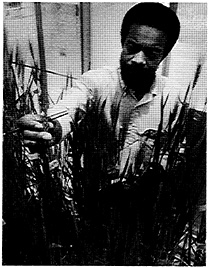also led to important scientific insights, as in the case of Lyell discussed above.

The empirical link between scientific knowledge and the physical, biological, and social world constrains the influence of values in science. Researchers are continually testing their theories about the world against observations. If hypotheses do not accord with observations, they will eventually fall from favor (though scientists may hold on to a hypothesis even in the face of some conflicting evidence since sometimes it is the evidence rather than the hypothesis that is mistaken).
The social mechanisms of science also help eliminate distorting effects that personal values might have. They subject scientific claims to the process of collective validation, applying different perspectives to the same body of observations and hypotheses.
The challenge for individual scientists is to acknowledge and try to understand the suppositions and beliefs that lie behind their own work so that they can use that self-knowledge to advance their work. Such self-examination can be informed by study in many areas outside of science, including history, philosophy, sociology, literature, art, religion, and ethics. If narrow specialization and a single-minded focus on a single activity keep a researcher from developing the perspective and fine sense of discrimination needed to apply values in science, that person's work can suffer.
CONFLICT OF INTEREST
Sometimes values conflict. For example, a particular circumstance might compromise—or appear to compromise—professional judgments. Maybe a researcher has a financial interest in a particular company, which might create a bias in scientific decisions affecting the future of that company (as might be the case if a researcher with stock in a company were paid to determine the usefulness of a new device produced by the company). Or a scientist might receive a manuscript or proposal to review that discusses work similar to but a step ahead of that being done by the reviewer. These are difficult situations that require trade-offs and hard choices, and the scientific community is still debating what is and is not proper when many of these situations arise.
Virtually all institutions that conduct research now have policies and procedures for managing conflicts of interest. In addition, many editors of scientific journals have established explicit policies regarding conflicts of interest. These policies and procedures are designed to protect the integrity of the scientific process, the missions of the institutions, the investment of stakeholders in institutions (including
|
A CONFLICT OF INTEREST John, a third-year graduate student, is participating in a department-wide seminar where students, postdocs, and faculty members discuss work in progress. An assistant professor prefaces her comments by saying that the work she is about to discuss is sponsored by both a federal grant and a biotechnology firm for which she consults. In the course of the talk John realizes that he has been working on a technique that could make a major contribution to the work being discussed. But his faculty advisor consults for a different, and competing, biotechnology firm.
|
the investments of parents and students in universities), and public confidence in the integrity of research.
|
INDUSTRIAL SPONSORSHIP OF ACADEMIC RESEARCH Sandra was excited about being accepted as a graduate student in the laboratory of Dr. Frederick, a leading scholar in the field, and she embarked on her assigned research project eagerly. But after a few months she began to have misgivings. Though part of Dr. Frederick's work was supported by federal grants, the project on which she was working was totally supported by a grant from a single company. She had known this before coming to the lab and had not thought it would be a problem. But she had not known that Dr. Frederick also had a major consulting agreement with the company. She also heard from other graduate students that when it came time to publish her work, any paper would be subject to review by the company to determine if any of her work was patentable.
|
Disclosure of conflicts of interest subjects these concerns to the same social mechanisms that are so effective elsewhere in society. In some cases it may only be necessary for a researcher to inform a journal editor of a potential conflict of interest, leaving it for the editor to decide what action is necessary. In other cases careful monitoring of research activities can allow important research with a potential conflict of interest to go forward while protecting the integrity of the institution and of science. In any of these cases the intent is to involve outside monitors or otherwise create checks to reduce the possibility that bias will enter into science.
PUBLICATION AND OPENNESS
Science is not an individual experience. It is shared knowledge based on a common understanding of some aspect of the physical or social world. For that reason, the social conventions of science play an important role in establishing the reliability of scientific knowledge. If these conventions are disrupted, the quality of science can suffer.
Many of the social conventions that have proven so effective in science arose during the birth of modern science in the latter half of the seventeenth century. At that time, many scientists sought to keep their work secret so that others could not claim it as their own. Prominent figures of the time, including Isaac Newton, were loathe to convey news of their discoveries for fear that someone else would claim priority—a fear that was frequently realized.
The solution to the problem of making new discoveries public while assuring their author's credit was worked out by Henry Oldenburg, the secretary of the


